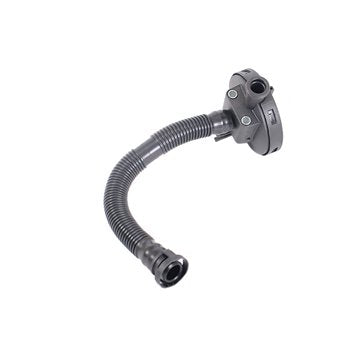Just How a Clp Engine Can Improve Performance in Various Industries
The arrival of CLP engines marks a significant change in operational effectiveness across different sectors, driven by their ability to maximize fuel intake and minimize downtime. As companies progressively focus on sustainability along with efficiency, the duty of CLP engines comes to be even a lot more crucial.
Overview of CLP Engines
CLP engines, or Continuous Fluid Propellant engines, represent a significant development in propulsion modern technology, particularly for area applications. These engines use a constant feed system that enables for the continual expulsion of propellant, resulting in boosted efficiency and performance compared to traditional strong or hybrid propulsion systems. By keeping a consistent circulation of fluid propellant, CLP engines can accomplish extra precise drive control, which is essential for navigating spacecraft in various goal circumstances.
The design of CLP engines integrates sophisticated materials and ingenious fuel monitoring systems. clp engine. This leads to reduced weight and raised integrity, important elements for long-duration room missions. The constant operation minimizes the danger of combustion instability, a typical challenge in standard rocket engines.

Benefits in Manufacturing
The manufacturing of Constant Liquid Propellant (CLP) engines presents several notable advantages that improve both efficiency and cost-effectiveness. One of the key advantages is the structured manufacturing process, which minimizes the complexity associated with traditional propulsion systems. By utilizing fluid propellant, producers can attain higher accuracy in engine efficiency, leading to enhanced power output and minimized waste.
Furthermore, CLP engines facilitate a greater degree of modularity, enabling less complicated combination into various production lines. This flexibility can significantly reduce lead times and enhance general functional adaptability. The use of CLP innovation additionally often tends to decrease the need for substantial maintenance due to less moving components, which translates right into minimized downtime and functional expenses.

Applications in Logistics
Leveraging Constant Fluid Propellant (CLP) engines in logistics uses considerable benefits in operational efficiency and dependability. These engines provide a durable option for numerous transportation requirements, allowing the smooth motion of products throughout huge distances. The fundamental layout of CLP engines permits consistent power outcome, which converts right into smoother and more foreseeable transportation schedules.
Among the essential applications of CLP engines in logistics remains in durable freight transport, where they can drive both ground and aerial lorries. Their capability to keep high efficiency under differing tons conditions ensures that delivery timelines are fulfilled, thereby enhancing customer satisfaction. Furthermore, CLP engines can be integrated right into automated logistics systems, promoting real-time monitoring and enhancing course preparation.
In addition, the resilience of CLP engines minimizes upkeep downtime, allowing logistics firms to maximize their functional capabilities. This is specifically useful in warehousing operations, where effectiveness in dealing with and moving goods is critical. As logistics remains to progress, the combination of CLP engines represents a forward-thinking strategy that not only enhances efficiency but also supports the sector's growing demands for dependability and speed.
Effect on Power Performance
How do Continuous Liquid Propellant (CLP) engines enhance energy performance in transportation? over at this website CLP engines utilize a consistent circulation of liquid gas, enhancing combustion procedures and maintaining a secure thrust outcome. This design minimizes power losses connected with standard combustion engines, where gas delivery can differ and bring about inefficiencies.
The continual procedure of CLP engines permits an extra reliable thermal cycle, resulting in higher details impulse contrasted to traditional engines. clp engine. This converts to lowered gas consumption for the same amount of work done, significantly lowering functional expenses throughout various transportation sectors, consisting of air travel and maritime industries
Furthermore, the capacity of CLP engines to maintain optimal performance under varying tons problems lowers the need for frequent velocity and important site slowdown, even more enhancing fuel effectiveness. Enhanced power effectiveness not just adds to cost savings yet additionally causes reduce greenhouse gas discharges, lining up with worldwide sustainability goals.
Future Trends and Innovations
Emerging advancements in Continual Fluid Propellant (CLP) engine modern technology assurance to reinvent the landscape of transport effectiveness and sustainability. As markets pivot toward greener alternatives, CLP engines stand at the forefront, incorporating cutting-edge materials and style approaches that enhance performance while reducing environmental effect.
One of the most encouraging trends is the fostering of crossbreed systems that incorporate CLP engines with renewable energy sources. This harmony can maximize gas intake and decrease emissions, lining up with worldwide sustainability objectives. Innovations in computational fluid characteristics (CFD) are promoting the style of more aerodynamically efficient engines, leading to decreased drag and boosted gas performance.
Moreover, the growth of clever monitoring systems is readied to enhance functional effectiveness. These systems take advantage of data analytics and IoT technology to optimize engine efficiency in real-time, making certain that the engines operate within their most efficient specifications.
As research proceeds to check out alternate propellant formulas-- such as biofuels and artificial gas-- the future of CLP engines looks appealing. By using these technologies, industries can not only enhance their efficiency however also contribute considerably to a cleaner, Source more lasting future in transport.
Conclusion
To conclude, CLP engines stand for a considerable advancement in effectiveness across numerous sectors. Their capability to optimize gas consumption and decrease operational expenses, combined with a continuous feed system, enhances power output and functional reliability. The assimilation of sophisticated materials and fewer moving components decreases maintenance demands, while alignment with sustainability goals placements CLP engines as a pivotal modern technology for the future. Proceeded development in this field promises additional renovations in effectiveness and ecological efficiency.